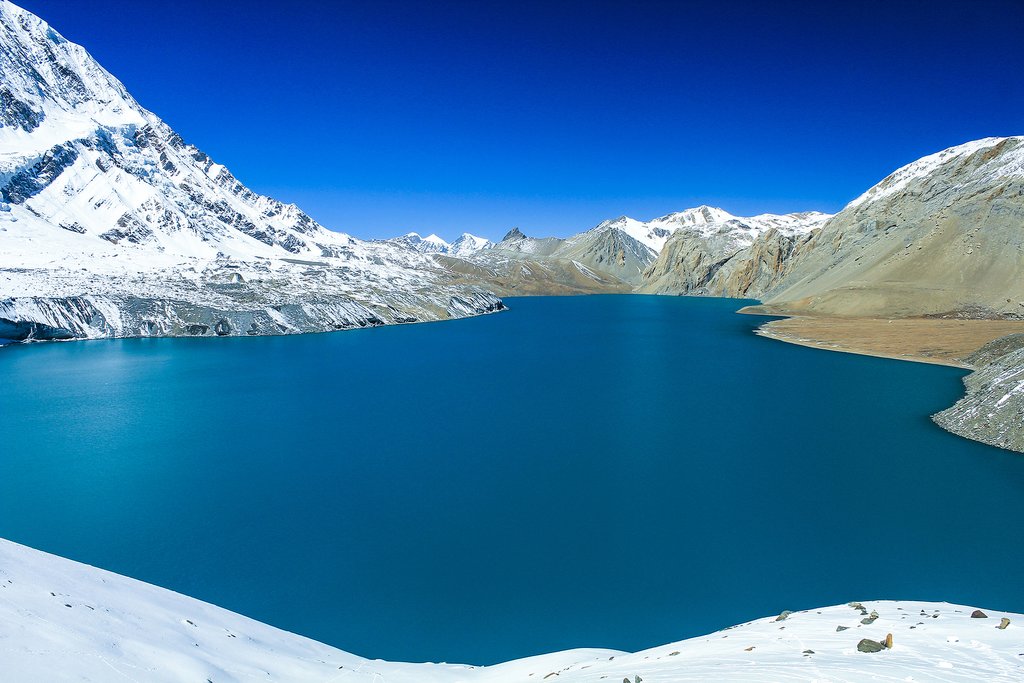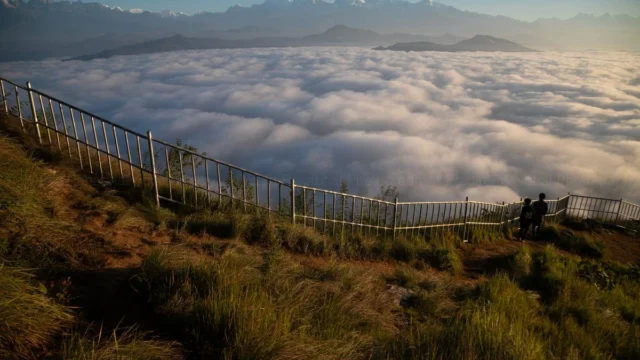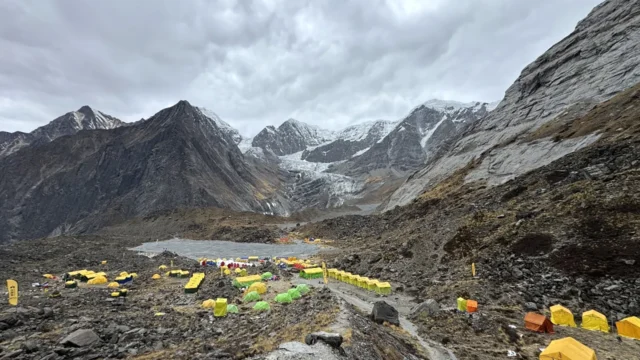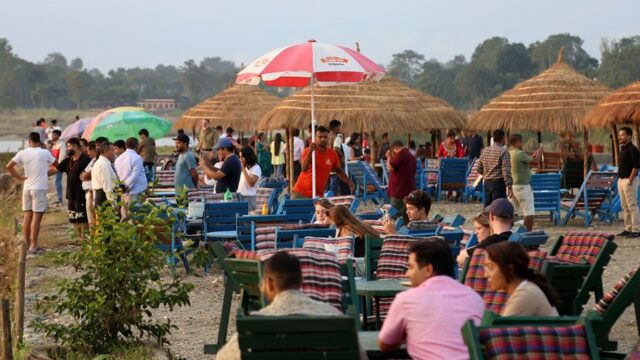Nestled in the northern reaches of Nepal’s Annapurna region, Tilicho Lake stands as a mesmerizing testament to nature’s grandeur. Known for its breathtaking beauty and spiritual significance, Tilicho Lake has increasingly become a sought-after destination for adventure enthusiasts and nature lovers alike. This news feature delves into the allure of Tilicho Lake, exploring its unique features, tourism dynamics, and the experiences it offers to travelers.
Tilicho Lake is situated at an altitude of approximately 4,919 meters (16,138 feet) above sea level, making it one of the highest lakes in the world. The lake is a natural wonder, fed by the surrounding glaciers and snow-capped peaks of the Annapurna range. Its pristine blue waters are framed by rugged mountain terrain, offering a striking contrast to the snow-laden peaks that tower above it. The lake’s serene environment is a haven for trekkers and nature enthusiasts who seek solace away from bustling city life.
The journey to Tilicho Lake is an adventure in itself, typically undertaken as part of the Annapurna Circuit Trek. The trek to Tilicho Lake involves crossing various terrains, including lush forests, alpine meadows, and rocky paths. The journey is challenging yet rewarding, providing trekkers with stunning vistas of the Annapurna and Dhaulagiri mountain ranges.
The trek generally begins from the town of Besisahar, which is accessible by road from Kathmandu. From Besisahar, trekkers proceed through various villages, including Chamje, Dharapani, and Chame, before reaching the Tilicho Base Camp. The trek from the base camp to Tilicho Lake is a highlight, offering panoramic views of the surrounding peaks and an opportunity to experience the unique Tibetan culture of the region.
The rise in popularity of Tilicho Lake has brought a steady influx of tourists to the region. While this influx has bolstered the local economy and provided new opportunities for small businesses, it has also raised concerns about the ecological impact on the pristine environment. Increased foot traffic and waste can pose threats to the delicate ecosystem around Tilicho Lake.
Efforts are underway to mitigate these impacts through sustainable tourism practices. Local authorities and trekking agencies are working together to promote responsible trekking habits, including waste management and minimizing the environmental footprint. Education programs are being implemented to raise awareness among trekkers about the importance of preserving the natural beauty and ecological balance of the region.
Beyond its natural allure, Tilicho Lake holds deep cultural and spiritual significance. It is considered a sacred site by the local Manangi people, who believe that the lake is the abode of various deities. The lake’s remote location and serene ambiance add to its spiritual mystique, attracting not only trekkers but also pilgrims seeking spiritual solace.
The nearby village of Manang serves as a cultural hub, where visitors can immerse themselves in the rich traditions and customs of the Tibetan-influenced communities. The local festivals and rituals, often centered around the lake and its surrounding mountains, offer a unique cultural experience for travelers.
While Tilicho Lake remains relatively remote compared to more developed tourist destinations, accommodations and facilities are available to cater to trekkers. Basic lodges and teahouses are scattered along the trekking route, providing essential services such as food, shelter, and medical assistance.
The accommodation options vary from basic guesthouses to more comfortable lodges with modern amenities. However, trekkers need to prepare for a rustic experience, as the remote location means that facilities are limited compared to more urban areas.
The ideal time to visit Tilicho Lake is during the pre-monsoon (March to May) and post-monsoon (September to November) periods. During these times, the weather is relatively stable, and the skies are clear, offering optimal conditions for trekking and enjoying the breathtaking views. The winter months can be harsh, with heavy snowfall and freezing temperatures, while the monsoon season brings heavy rains and an increased risk of landslides.
Trekking to Tilicho Lake is not without its challenges. The high altitude can pose risks of altitude sickness, and the trek involves navigating rugged and often slippery terrain. Proper acclimatization, physical fitness, and preparation are crucial for a safe and enjoyable trekking experience.
Travelers should also be aware of the need for permits and regulations. The Annapurna Conservation Area Permit (ACAP) and the Trekkers’ Information Management System (TIMS) card are required for trekking in the Annapurna region. It is advisable to trek with a licensed guide or tour operator who can ensure compliance with local regulations and provide support during the journey.
Tilicho Lake, with its stunning natural beauty and spiritual significance, remains one of Nepal’s most captivating trekking destinations. Its high-altitude serenity, challenging trek, and cultural richness offer a unique and rewarding experience for those who undertake the journey.
As tourism continues to grow in the region, maintaining a balance between visitor influx and environmental preservation will be crucial to ensuring that Tilicho Lake remains a pristine and cherished destination for generations to come. For those seeking an adventure amidst some of the world’s highest peaks, Tilicho Lake promises an unforgettable experience that captures the essence of Nepal’s Himalayan splendor.






